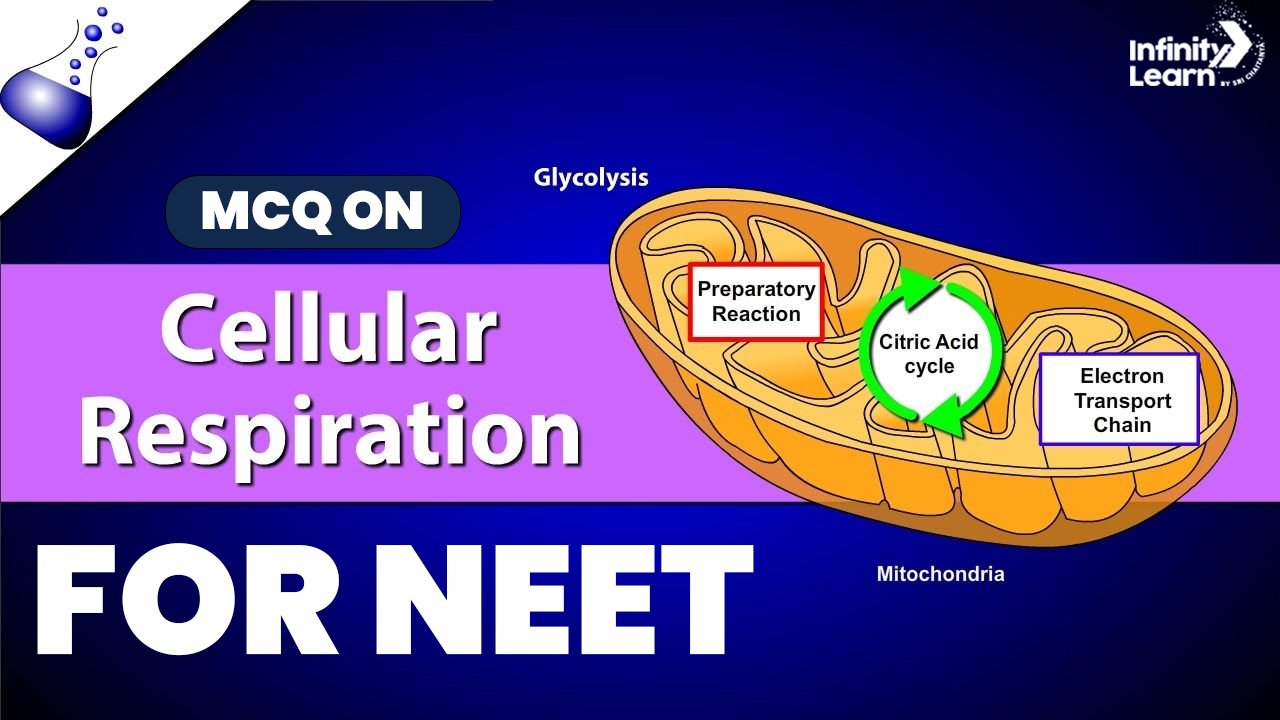Cellular respiration is a chemical process in our cells that turns sugar (glucose) into a useful energy molecule called adenosine triphosphate (ATP). Just one sugar molecule can make around 30-32 ATP molecules. This cellular respiration process helps our body create the energy it needs for various tasks. ATP is especially crucial for making certain reactions happen in our body that wouldn’t occur on their own because they require some extra energy.

Cellular Respiration MCQ for NEET
Ques 1. During cellular respiration, the carbon dioxide produced is
(a) absorbed
(b) stored
(c) taken out
(d) consumed
Answer: taken out
Ques 2. Oxidative phosphorylation is the production of?
(a) NADH in respiration
(b) ATP in respiration
(c) NADPH in photosynthesis
(d) ATP in photosynthesis
Answer: ATP in respiration
Ques 3. What is the end product of glycolysis?
(a) Fructose I – phosphate
(b) Glucose I – phosphate
(c) Pyruvic acid
(d) Acetyl CoA
Answer: Pyruvic acid
Ques 4. Before pyruvate enters the Krebs cycle, the connecting link between Krebs cycle and glycolysis is changed to
(a) PEP
(b) Acetyl CoA
(c) Pyruvate
(d) Oxaloacetate
Answer: Acetyl CoA
Ques 5. Reduction of NADP+ to NADPH is seen in
(a) Glycolysis
(b) HMP
(c) EMP (1988)
(d) Calvin cycle
Answer: HMP
Ques 6. Pick the incorrect statement regarding the Krebs cycle
(a) cycle starts with condensation of the acetyl group with pyruvic acid to produce citric acid
(b) the cycle has three points where reduction of NAD+ to NADH + H+ occurs
(c) at a point, reduction of FAD+ to FADH2 occurs
(d) during the conversion of succinyl Co-A to succinic acid, the synthesis of a molecule of GTP occurs
Answer: The cycle starts with the condensation of the acetyl group with pyruvic acid to produce citric acid
Ques 7. In the cellular respiration of one molecule of glucose, _________ of energy is conserved as 38 ATP molecules
(a) 686 Kcal
(b) 456 Kcal
(c) 654 Kcal
(d) 277 Kcal
Answer: 277 Kcal
Ques 8. Which of these yields the maximum number of ATP molecules and is the ultimate respiratory substrate
(a) Amylose
(b) Glucose
(c) Ketogenic amino acid
(d) Glycogen
Answer: Glucose
Ques 9. The CH bond of food in cellular respiration is disintegrated through
(a) metabolism
(b) catalysis
(c) oxidation
(d) reduction
Answer: oxidation
Ques 10. ___________ is the incomplete oxidation of glucose into pyruvic acid involving many intermediate steps
(a) Krebs cycle
(b) HMS-pathway
(c) Glycolysis
(d) TCA-pathway
Answer: Glycolysis
| NEET Biology MCQ list | |
| MCQ on Arthropoda | MCQ on Predators |
| MCQ on Tuberculosis | MCQ on Dialysis |
| MCQ on Growth Hormones | |




